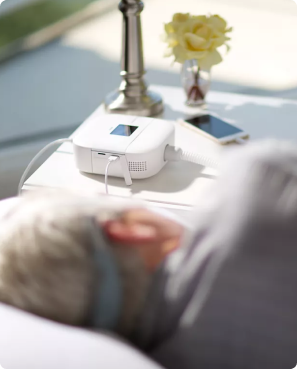What is a tracheostomy?
A tracheostomy (trach) is an artificial opening in the neck into the windpipe (trachea). This is called a stoma. It allows air to go in and out of the lungs. It also allows any mucus to be removed. A small tube (the tracheostomy tube) is inserted through the opening. Breathing occurs through this tube. When you breathe through the nose and mouth, the air is filtered, warmed, and moistened (humidified) before it gets to the lungs. When you breathe through a tracheostomy tube, air enters directly into the windpipe and the usual warming, humifying, and filtering do not occur. Patients are unable to speak when the cuff of the trach is inflated. They may also speak with the aid of a passey muir valve.
Parts of the tracheostomy set:
- Cuff- the balloon on the end of the trach tube. When inflated, it forms a seal against the wall of your windpipe. This stops the air flow through your mouth and nose so that you breathe through the trach tube.
- Inflation line- thin plastic tubing that carries air to and from the cuff
- Cuff port- a small, plastic balloon like component on the end of the inflation line. This cuff port shows if the cuff is inflated. It is also called a pilot balloon.
- Luer valve- where the syringe is connected to inflate or deflate the cuff
- 15 mm connector- part of the trach tube or inner cannula that sticks out at the neck.
- Ventilator tubing, an ambu bag or speaking valve may be connected to the 15mm connector.
- Neck flange-usually contains product information and has holes on either side for securing neck ties. (Shiley 8mm IDC)
- Outer cannula- the tube that fits inside the outer trach tube. It is removed for cleaning and or replacement.
- Obturator- a guide used to insert the trach tube.
Suctioning:
Suctioning removes secretions from the trach tube and help keep the airway open. Use suction only when it is necessary, when secretions build up and the patient is unable to clear their own airway.
Equipment:
- Suction machine, canister, and tubing set up
- Suction catheters that are no greater than half the diameter of the trach tube
- Gloves
- Bowl, container, glass with cool water
- The above items can come in a kit together
- Saline Bullets-for suctioning
- Suction catheter kits are disposable after each use
- Suction tubing can be cleaned with water to clear secretions from tubing
- Dispose of suction canister per facility requirements
How to suction:
- Wash your hands thoroughly, put on gloves
- Attach the suction catheter to the connecting tubing of the suction machine
- Turn on suction machine
- Dip the catheter tip into the suction rinse water and test suction by placing your thumb over the port of the catheter. Release
- Increase oxygen flow rate if MD advised
- Insert the catheter with NO suction applied. Gently insert the catheter about 4 to 5 inches, or until resistance is met, or until patient coughs, with port open. Pull the suction catheter back slightly before you apply suction.
Trach cuff care:
A cuffed trach tube has an inflatable cuff attached to it. When the cuff us inflated with air, it forms a seal between the trachea and the trach tube. To inflate a cuffed trach a 5 to 10 cc syringe is needed.
Speaking Valve:
Speaking valves contain a one-way valve. They can be placed on the end of a trach tube. The valve stays open while you breathe in and closes while you breathe out. This allows air to move up and through the vocal cords. You can speak without covering the end of the trach tube with your finger. Your speech may sound more natural.
To Use:
- The trach cuff must be deflated
- Increase the time worn as possible
- Do not wear while sleeping
- Do not throw away
- Remove as breathing becomes difficult
Cleaning:
- Wash the valve in soapy water every day using moisturizer free, clear detergent
- Rinse thoroughly in cool water, not hot
- Air dry

